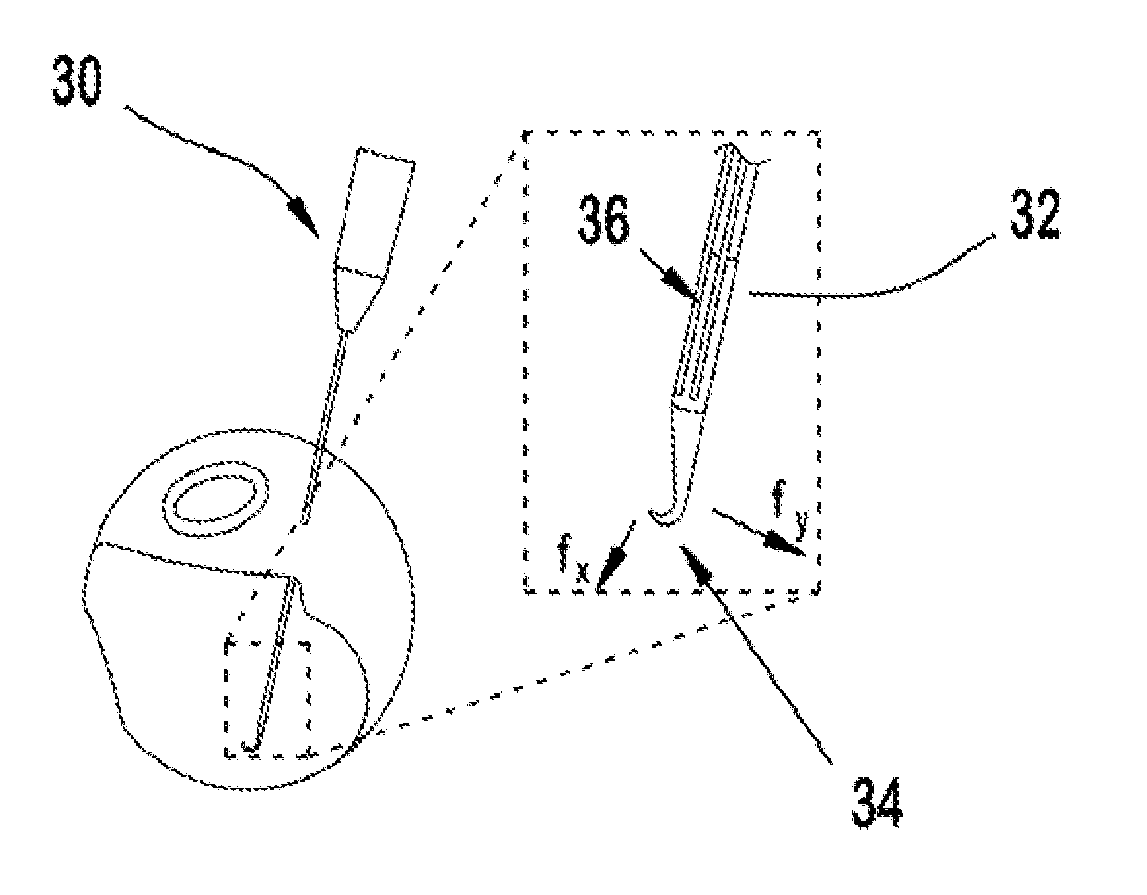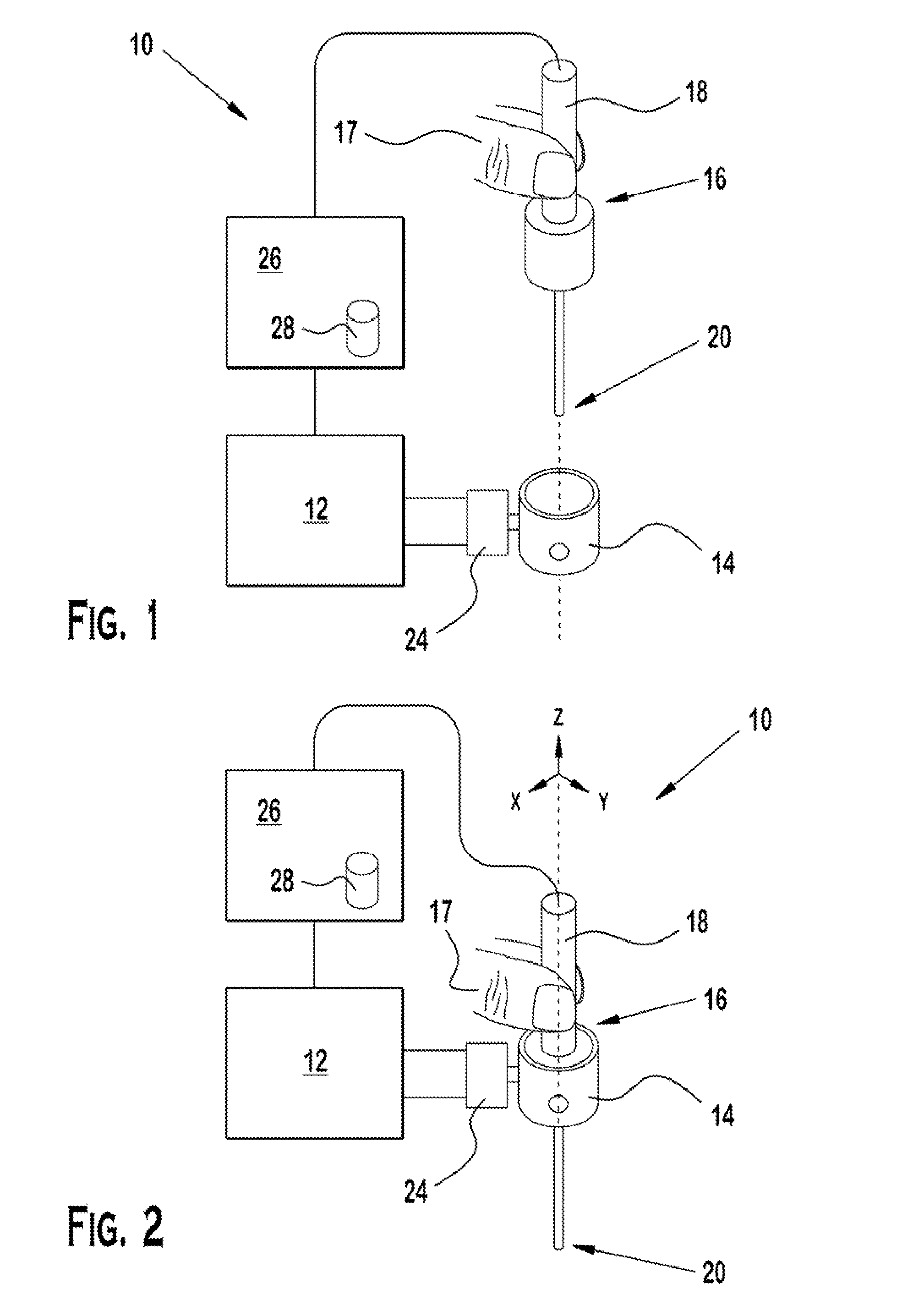Method for presenting force sensor information using cooperative robot control and audio feedback
a technology of force sensor and robot control, which is applied in the field of cooperative robot control and audio feedback for presenting force sensor information, can solve the problems the difficulty of performing micron scale motor tasks, and the difficulty of retinal microsurgery, and achieves the effect of limiting the speed of robots
- Summary
- Abstract
- Description
- Claims
- Application Information
AI Technical Summary
Benefits of technology
Problems solved by technology
Method used
Image
Examples
example
[0038]The following Example has been included to provide guidance to one of ordinary skill in the art for practicing representative embodiments of the presently disclosed subject matter. In light of the present disclosure and the general level of skill in the art, those of skill can appreciate that the following Example is intended to be exemplary only and that numerous changes, modifications, and alterations can be employed without departing from the scope of the presently disclosed subject matter. The following Example is offered by way of illustration and not by way of limitation.
[0039]A tool with intergrated fiber Bragg grating (FBG) sensors was manufactured with three optical fibers along the tool shaft. The tool was mounted in the robot tool holder in a calibrated orientation relative to the robot. The sensor data was collected and processed at 2 kHz and transmitted over TCP / IP. To simulate the peeling of retinal tissue, a phantom model was generated. Sticky tabs from 19 mm Cl...
PUM
 Login to View More
Login to View More Abstract
Description
Claims
Application Information
 Login to View More
Login to View More - R&D
- Intellectual Property
- Life Sciences
- Materials
- Tech Scout
- Unparalleled Data Quality
- Higher Quality Content
- 60% Fewer Hallucinations
Browse by: Latest US Patents, China's latest patents, Technical Efficacy Thesaurus, Application Domain, Technology Topic, Popular Technical Reports.
© 2025 PatSnap. All rights reserved.Legal|Privacy policy|Modern Slavery Act Transparency Statement|Sitemap|About US| Contact US: help@patsnap.com



